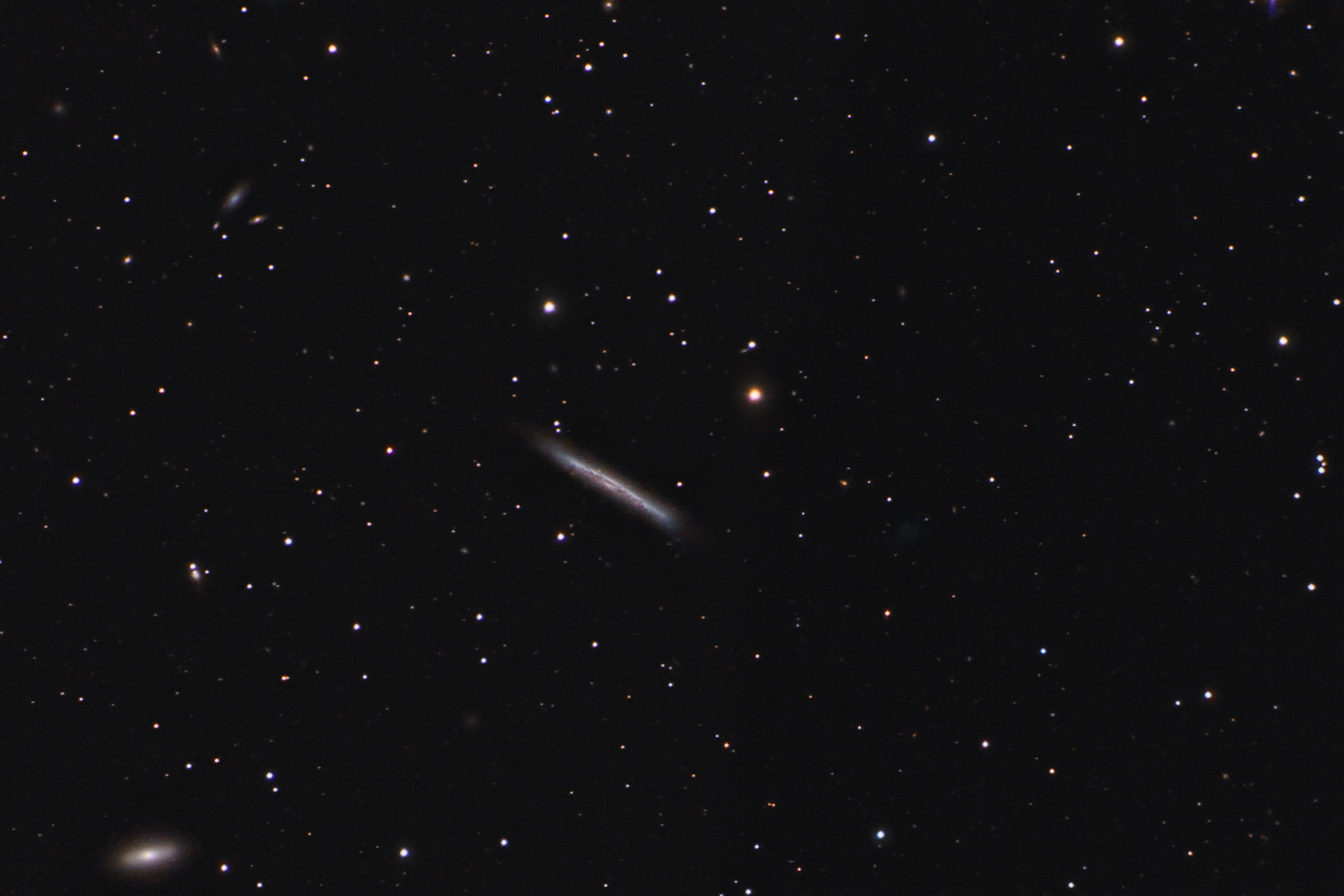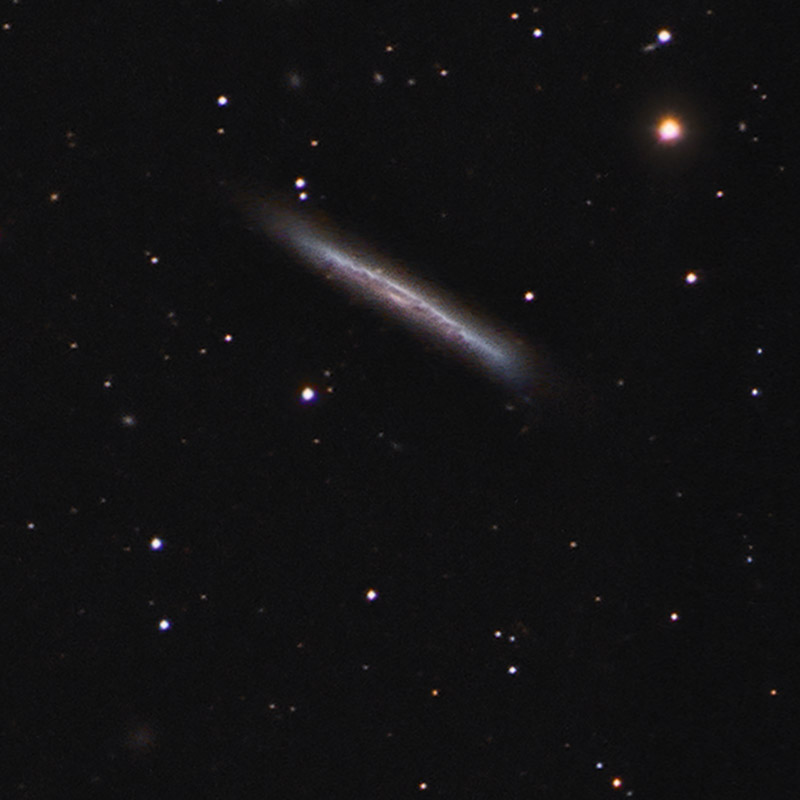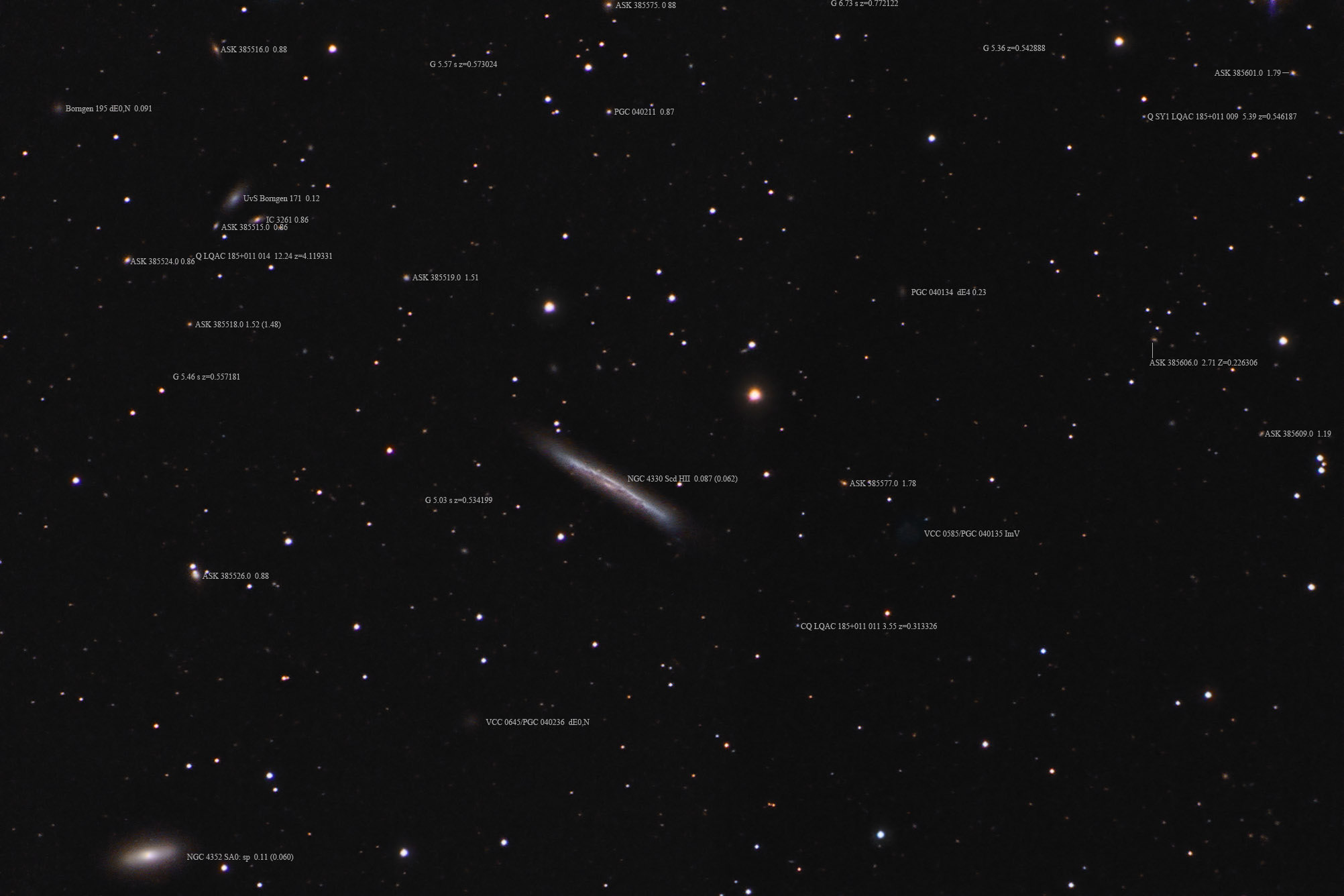| Description | Images |
Object name: NGC4330Designation(s): NGC4330, NGC4352, IC3261, NGC 4330 is a fuzzy, somewhat warped edge on galaxy in northwestern Virgo not far from the "Realm of the Galaxies". It is also cataloged in the Flat Galaxy Catalog as FGC 1423, the main reason it went on my to-do list. Redshift puts it nearly 90 light-years distant but non-redshift measurements place it a bit over 60 million light-years away. The latter would make it a "Realm" galaxy as they are about 60 million light-years away. The higher redshift could just be due to its orbital velocity around the cluster. Cluster members can have even higher redshifts as well as slight blue shifts for this reason. It's its fuzzy outline and warped shape that interested me in imaging it. Note the fuzzy edges warp differently than the bright, well-defined-region. The northeast end warps up looking at the faint detail while the bright warps down. Both bright ends warp down. The west end of the fuzzy part is so, well fuzzy, I could argue for straight, bent down or maybe even up. In any case, these features would argue for a interaction or merger in its past. Being there are a lot of Virgo Cluster galaxies to the north and northeast such an interaction isn't surprising. It was discovered by Bindon Stoney on April 14, 1852. Related Designation(s):2MASS J12231717+1122049, 2MASS J12235249+1128525, 2MASS J12240502+1113051, 2MASX J12231724+1122047, 2MASX J12235252+1128521, 2MASX J12240502+1113048, 2MFGC 09747, ACSVCS 049, ALFALFA 3-243, ASK 275555.0, ASK 385520.0, CGCG 070-039, CGCG 070-044, CGCG 1220.7+1139, CGCG 1221.5+1130, EON J185.813+11.364, EVCC 0477, EVCC 0507, FAUST 3109, FAUST V034, FGC 1423, GALEXASC J122352.64+112853.5 , GALEXASC J122404.98+111305.2 , GALEXMSC J122352.56+112853.7 , GALEXMSC J122404.94+111305.6 , HDCE 0720 NED054, HDCE 0720 NED064, HIR J1222+1118, IC 3261, IC3261, IRAS 12207+1138, LDCE 0904 NED076, LDCE 0904 NED086, LEDA 169197, LGG 285:[G93] 020, LGG 289:[G93] 045, MAPS-NGP O_496_0093930, MCG +02-32-020, MCG +02-32-023, NGC 4325:[ZM98] 0002, NGC 4325:[ZM98] 0006, NGC 4330, NGC 4352, NGC4330, NGC4352, NSA 049025, NSA 066625, PGC 040201, PGC 040313, RFGC 2270, SDSS J122352.49+112852.6, SDSS J122352.50+112852.7, SDSS J122405.00+111305.0, SDSS J122405.02+111305.0, SPIDER J185.96874+11.48130, SSTSL2 J122352.49+112852.4, SSTSL2 J122405.05+111305.1, UGC 07456, UGC 07475, USGC U490 NED274, USGC U490 NED289, UZC J122317.0+112206, UZC J122405.0+111306, VCC 0630, VCC 0698, VPC 0271, VPC 0312, VPC 0328, [BEC2010] HRS 124, [FCJ2006] 049, [M98j] 174 NED64, [M98j] 174 NED73, [PJC2008] 049, [RG2008] J185.82188+11.36797 , [RG2008] J186.02087+11.21807 , [TTL2012] 427849, | Permanent link: https://images.mantrapskies.com/catalog/NGC/NGC4330-NGC4352-IC3261/NGC4330L4X10RGB2X10.JPG |


